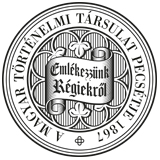Századok – 2014
KÖZLEMÉNYEK - Fedeles Tamás: "Medicina contra peccata mundana" Késő középkori főúri misealapítványok II/443
KÉSŐ KÖZÉPKORI FŐÚRI MISEALAPÍTVÁNYOK 469 versary masses is rather low. Some pieces of information can be found about mass-series, e.g. the mass series of Bánfíy brothers which contained altogether 35 and 40 services. The masses were celebrated by the members of the clergy with particular purpose. Naturally, they followed the regulation of the establishers. In most of the cases, founders asked for masses, which were offered to the saints (26) as well as for requiems. The number of those masses that had been ordered for the sins (pro peccatis) is also relatively high (15). Most frequently (33), the mediation of Virgin Mary was asked during the masses that had been offered to her. This reflects unambiguously the popularity of the cult of Mary during the Middle Ages in Hungary. Self-evidently, founders offered the services for the patron saints of their own or of their family members. The selection of saints was determined by several factors i.e. personal commitment, family traditions and the patrocinium of the donated church. Founders had to secure the adequate financial background to the service offers. In case of barons, the majority of donations were constituted by their landed properties (possessiones). Among magnates, payment with ready money proved to be less general. Financial background of massendowments was established occasionally with conveying or release from the payment of certain types of taxes or customs. Besides the above-mentioned facts, several houses, mills, vineyards, certain objects as well as different crops can be found among the capital contribution of mass-endowments. Almost one half of the foundations (42.3%) were created in the monastery churches of the Order of Saint Paul the First Hermit. However, the confraternity of the Franciscans proved to be very popular among the barons, the number of mass-endowments, which were established at this order, remains lower. Regarding the other mendicant orders, one endowment was created in a monastery owned by the Dominicans and one more in a monastery established for the members of the Order of Saint Augustine. Monastic orders were represented only by the Benedictines, while the communities of prebends by the Order of Augustine as well as by the Premonstratensians. Concerning services, which were ordered by the secular clericals, mass-priests of parish-churches were favoured by the members of distinguished families (27%). They were followed by the cathedrals and chapels (7 and 8%). Having been examined the motifs connected to the selection of ecclesiastic institutions, we may observe an important correlation, namely, that 35% of mass-endowments were created in those own-established churches or chapels which had been previously set as the burial place of the family. The Order of Saint Paul the First Hermit can be considered as outstanding in this respect, too, as the ratio projected to them is exactly one third.
